World Flags
This page lists of the various symbols in the World Flags group.

Flags from countries around the world, including their origins, design and history.
Symbols in this group:
Flag of Afghanistan
The flag of Afghanistan (Pashto: د افغانستان بيرغ, Persian: بيرق افغانستان) was adopted by the Afghan Interim Administration on December 22, 2001.
Flag of Alabama
The current flag of the state of Alabama (the second in the state's history) was adopted by Act 383 of the Alabama state legislature on February 16, 1895
Flag of Albania
The Flag of Albania (Albanian: Flamuri i Shqipërisë) is a red flag, with a silhouetted black double-headed eagle in the centre, that represents the sovereign state of Albania located in the Balkans.
Adopted april 7, 1992
Flag of Algeria
The national flag of Algeria (Arabic: علم الجزائر, Berber: Acenyal n Dzayer) consists of two equal vertical bars, green and white, charged in the center with a red star and crescent. The white color represents peace; the green, the beauty of nature; the red, the blood of those killed fighting for independence in the Algerian War (1954 to 1962) and the star and crescent represent Islam.
Flag of Andorra
The national flag of the Principality of Andorra (Catalan: Bandera d'Andorra) was adopted in 1866. The flag is a vertical tricolour of blue, yellow, and red with the coat of arms of Andorra in the centre. Although the three vertical bars may at first appear to be of equal width, the centre yellow bar is slightly wider than the other two so that the ratio of bar widths is 8:9:8. The overall flag ratio is 7:10.
Flag of Angola
The national flag of Angola came into use at independence on November 11, 1975. It is split horizontally into an upper red half and a lower black half.
Flag of Antigua and Barbuda
The national flag of Antigua and Barbuda was adopted on February 27, 1967, and was designed by a nationally acclaimed artist and sculptor, Sir Reginald Samuel.
Flag of Argentina
The national flag of Argentina is a triband, composed of three equally wide horizontal bands coloured light blue, white and light blue.
Flag of Armenia
The national flag of Armenia, the Armenian Tricolour (known in Armenian: as Եռագույ
Flag of Australia
The flag of Australia is a defaced Blue Ensign: a blue field with the Union Jack in the canton (upper hoist quarter), and a large white seven-pointed star known as the Commonwealth Star in the lower hoist quarter. The fly contains a representation of the Southern Cross constellation, made up of five white stars – one small five-pointed star and four, larger, seven-pointed stars.
Flag of Austria
The flag of Austria has three equal horizontal bands of red (top), white, and red. The Austrian triband is the second-oldest flag in use at least since 1230, after the Danish flag (which has been in use since 1219).
Flag of Azerbaijan
The flag of Azerbaijan (Azerbaijani: Azərbaycan bayraцзеpı) is a tricolour featuring three equally sized horizontal pales of blue, red, and green, with a white crescent and an eight-pointed star centered in the red.
Flag of Bahrain
The national flag of Bahrain (Arabic: علم البحرين) consists of a white band on the left, separated from a red area on the right by five triangles that serve as a serrated line.
Flag of Bangladesh
The national flag of Bangladesh was adopted officially on 17 January 1972. It is based on a similar flag used during the Bangladesh Liberation War of 1971. The map was later deleted from the flag, most likely to simplify the design.[citation needed] A red disc is on top of the green field, offset slightly toward the hoist so that it appears centred when the flag is flying. The red disc represents the sun rising over Bengal, and also the blood of those who died for the independence of Bangladesh. The green field stands for the lushness of the land of Bangladesh.
Flag of Barbados
The national flag of Barbados was officially adopted on 30 November 1966, the island's first Independence Day. It consists of a triband of two bands of ultramarine, which are said to stand for the ocean; separated by a golden middle band, representing the sand on the island. A black trident-head (commonly called the "broken trident"), is centred within the golden band.
Flag of Belarus
The current national flag of Belarus (Belarusian: Сцяг Беларусі, Stsyah Byelarusi; Russian: Флаг Беларуси, Flag Belarusi) is a red and green flag with a white and red ornament pattern placed at the staff (hoist) end. The current design was introduced in 2012 by the State Committee for Standardization of the Republic of Belarus, and is adapted from a design approved in a referendum in May 1995. The current flag is a modification of the 1951 flag used while the country was a republic of the Soviet Union. The changes from the Byelorussian SSR was to not only remove symbols of communism (the hammer and sickle and also the red star) but it reversed the colors of the ornament pattern from white on red with red on white. Since the 1995 referendum, several flags used by government officials and agencies were modeled from the national flag.
flag of Belgian Congo (1908-1960)
Flag of International African Association as well as the Congo Free State (1877-1908) and the Belgian Congo (1908-1960)
Flag of Belgium
The national flag of Belgium (Dutch: Vlag van België, French: Drapeau de la Belgique, German: Flagge Belgiens) contains three equal vertical bands of black (hoist side), yellow, and red. The colours were taken from the colours of the Duchy of Brabant, and the vertical design may be based on the flag of France.
Flag of Belize
The flag of Belize is a continued version of the earlier flag of British Honduras (the name of Belize during the British colonial period).
Flag of Benin
The National Flag of Benin is a flag consisting of two horizontal yellow and red bands on the fly side and a green vertical band at the hoist.
Flag of Bhutan
The national flag of Bhutan (Dzongkha: ཧྥ་རན་ས་ཀྱི་དར་ཆ་; Wylie: hpha-ran-sa-kyi dar-cho) is one of the national symbols of Bhutan.
Flag of Biafra
The flag of the former Republic of Biafra consists of a horizontal tricolour of red, black, and green, charged with a golden rising sun over a golden bar.
Flag of Bolivia
The current flag of Bolivia was originally adopted in 1851. The state flag and ensign (and war flag) is a horizontal tricolor of red, yellow and green with the Bolivian coat of arms in the center.
Flag of Bosnia and Herzegovina
The flag of Bosnia and Herzegovina contains a wide medium blue vertical band on the fly side with a yellow right triangle abutting the band and the top of the flag. The remainder of the flag is medium blue with seven full five-pointed white stars and two half stars top and bottom along the hypotenuse of the triangle.
Flag of Botswana
The national flag of Botswana was adopted on September 30, 1966. The flag is light blue with a black horizontal band across the centre, with white fimbriation.
Flag of Brazil
The national flag of Brazil (Portuguese: Bandeira do Brasil) is a blue disc depicting a starry sky spanned by a curved band inscribed with the national motto, within a yellow rhombus, on a green field. Brazil officially adopted this design for its national flag on November 19, 1889, replacing the flag of the second Empire of Brazil. The concept was the work of Raimundo Teixeira Mendes, with the collaboration of Miguel Lemos, Manuel Pereira Reis and Décio Villares.
Flag of Brunei
The national flag of Brunei has the crest of Brunei in the center, on a yellow field. The field is cut by black and white diagonal stripes, although they are officially called parallelograms.
Flag of Bulgaria
Jump to: navigation, search
Bulgaria Flag of Bulgaria.svg
Use Civil and state flag and civil ensign
Proportion 3:5
Adopted 1879 (original version)
1991 (current version)
Design A horizontal tricolour of white , green and red
The flag of Bulgaria (Bulgarian: знаме на България, [znɑmɛ nɑ bɤ̞ɫˈɡɑrijɐ]) is a tricolor consisting of three equal-sized horizontal bands of (from top to bottom) white, green, and red.
Flag of Burkina Faso
The flag of Burkina Faso is formed by two equal horizontal bands of red (top) and green, with a yellow five-pointed star resting in the center.
Flag of Burundi
The national flag of Burundi was adopted on March 28, 1967. It consists of a white saltire which divides the field into alternating red and green areas. The center of the saltire merges into a white disk, on which there are three red solid six-pointed stars outlined in green. The ratio of the flag was 2:3 until September 27, 1982.
Flag of Cambodia
The national flag of Cambodia (Tung-Cheat, "National flag") was readopted in 1993, after elections returned the monarchy to rule.
Flag of Cameroon
The national flag of Cameroon was adopted in its present form on 20 May 1975 after Cameroon became a unitary state. It is a vertical tricolor of green, red and yellow, defaced with a five-pointed star in its center. There is a wide variation in the size of the central star, although it is always contained within the inside stripe.
Flag of Canada
The National Flag of Canada, also known as the Maple Leaf and l'Unifolié (French for "the one-leafed"), is a flag consisting of a red field with a white square at its centre, in the middle of which is featured a stylized, 11-pointed, red maple leaf.
Flag of Cape Verde
The national flag of Cape Verde was adopted on September 22, 1992, replacing the flag adopted during Cape Verdean independence, fought for with Guinea-Bissau, another former Portuguese colony on mainland West Africa.
Flag of Chad
The national flag of the Republic of Chad (French: Drapeau du Tchad, Arabic: علم تشاد) is a vertical tricolor consisting (left to right) of a blue, a yellow and a red field.
Flag of Chile
The national flag of Chile, consists of two unequal horizontal bands of white and red and a blue square the same height as the white band in the canton, which bears a white five-pointed star in the center. It was adopted on 18 October 1817. The Chilean flag is also known in Spanish as La Estrella Solitaria (The Lone Star).
Flag of China
The flag of the People's Republic of China is a red field charged in the canton (upper corner nearest the flagpole) with five golden stars. The design features one large star, with four smaller stars in a semicircle set off towards the fly (the side farthest from the flag pole). The red represents the communist revolution; the five stars and their relationship represent the unity of the Chinese people under the leadership of the Communist Party of China (CPC). Sometimes, the flag is referred to as the "Five-star Red Flag"
Flag of Colombia
The flag of Colombia was adopted on November 26, 1861. It is a horizontal tricolor of yellow, blue and red. The yellow stripe takes up the top half of the flag and the blue and red take up a quarter of the space each.
Flag of Comoros
The current flag of the Union of Comoros (officially French: Union des Comores Arabic: الاتّحاد القمريّ, al-Ittiḥādd al-Qamariyy) was designed in 2001 and officially adopted on 7 January 2002. It continues to display the crescent and four stars, which is a motif that has been in use in slightly various forms since 1975 during the independence movement.
Flag of Costa Rica
The official flag of the Republic of Costa Rica is based on a design created in 1848. The state/national flag, also used as the military ensign, includes the coat of arms of Costa Rica. The civil ensign, commonly used as an unofficial national flag, omits the coat of arms.
Flag of Cuba
The flag of Cuba was adopted on 1848, containing a field with three blue stripes and two white stripes, and a red equilateral triangle at the hoist with a white 5-pointed star.
Flag of Cyprus
The flag of Cyprus (Greek: Σημαία της Κύπρου simea tis Kipru, Turkish: Kıbrıs Cumhuriyeti bayrağı) came into use on August 16, 1960, under the Zürich and London Agreements, whereby a constitution was drafted and Cyprus was proclaimed an independent state. The flag was designed by Turkish Cypriot art teacher İsmet Güney.
Flag of Denmark
The Flag of Denmark (Danish: Dannebrog Danish pronunciation: [ˈdanəˌbʁoˀ]) is red with a white Scandinavian cross that extends to the edges of the flag; the vertical part of the cross is shifted to the hoist side. The cross design, which represents Christianity, was subsequently adopted by the other Nordic countries; Sweden, Norway, Finland, Iceland, Åland Islands and the Faroe Islands, as well as the Scottish archipelagos of Shetland and Orkney. During the Danish-Norwegian personal union, Dannebrog ("Danish cloth") was also the flag of Norway and continued to be, with slight modifications, until Norway adopted its current flag in 1821.
Flag of Djibouti
The national flag of Djibouti (Somali: Calanka Jabuuti, Arabic: علم جيبوتي, French: Drapeau de Djibouti) features two equal horizontal bands of blue (top) and green with a white isosceles triangle based on the hoist side bearing a red, five-pointed star (representing the areas Somalis live in the region) in the center.
Flag of Dominica
The flag of Dominica was adopted on November 3, 1978, with some small changes having been made in 1981, 1988, and 1990.
Flag of East Timor
The flag of East Timor (Português: Bandeira de Timor-Leste) was adopted in 2002. It is the same as the 1975 flag.
Flag of Ecuador
The flag of Ecuador, which consists of horizontal bands of yellow (double width), blue and red, was first adopted on 1835 and later on September 26, 1860.
Flag of Egypt
The flag of Egypt (Egyptian Arabic: علم مصر, IPA: [ˈʕælæm ˈmɑsˤɾ]) is a tricolour consisting of the three equal horizontal red, white, and black bands of the Arab Liberation flag dating back to the Egyptian Revolution of 1952. The flag bears Egypt's national emblem, the Eagle of Saladin centered in the white band.
Flag of El Salvador
The flag of El Salvador was inspired by the flag of the Federal Republic of Central America, and by the flag of Argentina, the country that sent one of the first fleets to help consummate the independence of Central American republics from Spain.
Flag of Eritrea
The current flag of Eritrea was adopted on December 5, 1995. It uses the basic layout of the flag of the Eritrean People's Liberation Front. The wreath with upright olive branch symbol was derived from the 1952 flag.
Flag of Estonia
The national flag of Estonia (Estonian: Eesti lipp) is a tricolor featuring three equal horizontal bands of blue (top), black, and white. The normal size is 105 × 165 cm. In Estonian it is colloquially called the "sinimustvalge" (literally "blue-black-white"), after the colors of the bands.
Flag of Ethiopia
The current flag of Ethiopia was adopted on 31 October 1996. It conforms to the specifications set forth in Article 3 of the 1995 Constitution of Ethiopia, but the diameter of the central disc is increased from that of the flag used from 6 February to 31 October 1996.
Flag of Europe
The flag of Europe consists of a circle of 12 golden (yellow) stars on an azure background. It is the flag and emblem of the Council of Europe (CoE) and the European Union (EU)
Flag of Fiji
The current flag of Fiji was adopted on 10 October 1970. The state arms have been slightly modified but the flag has remained the same as during the colonial period. It is a defaced sky-blue "Blue Ensign" (the actual Blue Ensign version of the flag is the Government ensign). It has remained unchanged since Fiji was declared a republic in 1987, despite calls from some politicians (such as Opposition Senator Atu Emberson-Bain) for changes.
Flag of Finland
The flag of Finland (Finnish: Suomen lippu, Swedish: Finlands flagga), also called siniristilippu ("Blue Cross Flag"), dates from the beginning of the 20th century. On a white background, it features a blue Nordic cross, which represents Christianity.
Flag of France
The national flag of France is a tricolor featuring three vertical bands colored royal blue (hoist side), white, and red. It is known to English speakers as the French Tricolor or simply the Tricolor.
Flag of Gabon
The flag of Gabon has colors which are green, representing the forests; gold, representing the equator; and blue, representing the sea. The flag of Gabon is strikingly similar to the flag of Bandung, Indonesia.
Flag of Germany
The flag of Germany is a tricolour consisting of three equal horizontal bands displaying the national colours of Germany: black, red, and gold. The flag was first adopted as the national flag of modern Germany in 1919, during the Weimar Republic.
Flag of Guinea-Bissau
The flag of Guinea-Bissau was adopted in 1973 when independence from Portugal was proclaimed.
Flag of Guyana
The flag of Guyana, known as The Golden Arrow, has been the national flag of Guyana since May 1966 when the country became independent from the United Kingdom. It was designed by Whitney Smith, an American vexillologist (though originally without the black and white fimbriations, which were later additions suggested by the College of Arms in the United Kingdom).
Flag of India
The National flag of India is officially described in the Flag Code of India as follows: "The colour of the top panel shall be India saffron (Kesari) and that of the bottom panel shall be India green. The middle panel shall be white, bearing at its centre the design of Ashoka Chakra in navy blue colour with 24 equally spaced spokes."
Flag of Indonesia
The national flag of Indonesia, which is known as Sang Saka Merah-Putih ("The Sacred Red-and-White") or Bendera Merah-Putih ("The Red-and-White Flag") or simply Merah-Putih ("The Red-and-White"), or sometimes referred to as Sang Dwiwarna ("The Bicolor") in Indonesian is based on the banner of the 13th century Majapahit Empire in East Java.
Flag of Iran
The flag of Iran, also known as the Three-Coloured Flag, is a tricolour comprising equal horizontal bands of green, white and red with the national emblem ("Allah") in red centred on the white band and the takbir written 11 times in the Kufic script in white, at the bottom of the green and the top of the red band.
Flag of Iraq
The flag of Iraq (Arabic: علم العراق) includes the three equal horizontal red, white, and black stripes of the Arab Liberation Flag. This basic tricolor has been in use since 1963, with several changes to the green symbols in the central white stripe; the most recent version bears the Takbir rendered in green.
Flag of Ireland
The national flag of Ireland (Irish: bratach na hÉireann) – frequently referred to as the Irish tricolour – is a vertical tricolour of green (at the hoist), white, and orange
Flag of Israel
The flag of Israel (Hebrew: דגל ישראל Degel Yisrael, Arabic: علم إسرائيل 'Alam Isra'īl) was adopted on October 28, 1948, five months after the country's establishment. It depicts a blue hexagram on a white background, between two horizontal blue stripes.
Flag of Italy
The flag of Italy (bandiera d'Italia, often referred to in Italian as il Tricolor) is a tricolor featuring three equally sized vertical pales of green, white, and red, with the green at the hoist side. Its current form has been in use since 19 June 1946 and was formally adopted on 1 January 1948.
Flag of Ivory Coast
The flag of Ivory Coast (French: Drapeau de la Côte d'Ivoire) features three equal vertical bands of orange (hoist side), white, and green.
Flag of Jamaica
The flag of Jamaica was adopted on August 6, 1962, the original Jamaican Independence Day, the country having gained independence from the British-protected Federation of the West Indies. The flag consists of a gold saltire, which divides the flag into four sections: two of them green (top and bottom) and two black (hoist and fly).
Flag of Japan
The national flag of Japan is a white rectangular flag with a large red disk (representing the sun) in the center. This flag is officially called Nisshōki (日章旗?, "sun-mark flag") in Japanese, but is more commonly known as Hinomaru (日の丸?, "circle of the sun").
Flag of Jordan
The flag of Jordan, officially adopted on the 2nd of September, 1920, is based on the flag of the Arab Revolt against the Ottoman Empire during World War I.
Flag of Kel Ahaggar, Tuareg confederation in Algeria
Kel Ahaggar is a Tuareg confederation inhabiting the Hoggar Mountains in Algeria.
Flag of Kenya
The flag of Kenya (Swahili: Bendera ya Kenya) was officially adopted on December 12, 1963.
Flag of Kiribati
The flag of Kiribati: the upper half is red with a gold frigatebird (Fregata minor, in Gilbertese: te eitei) flying over a gold rising sun (otintaai), and the lower half is blue with three horizontal wavy white stripes to represent the ocean and the three groups (Gilbert, Phoenix and Line Islands). The 17 rays of the sun represent the 16 Gilbert Islands and Banaba (former Ocean Island).
Flag of Kuwait
The flag of Kuwait (Arabic: علم الكويت) was adopted on September 7, 1961, and officially hoisted November 24, 1961.
Before 1961, the flag of Kuwait, like those of other Gulf states, was red and white with the word "الكويت" in the middle. The present flag is in the Pan-Arab colours, but each color is also significant in its own right. Black represents the defeat of the enemy, while red is the color of blood on the Kuwaiti swords. White symbolizes purity, and green is for the fertile land.
Flag of Kyrgyzstan
The flag of Kyrgyzstan was adopted on 3 March 1992 by the Supreme Council of Kyrgyzstan. It consists of a red field with a yellow sun in the center having 40 uniformly spaced rays. In the center of the sun is a red ring crossed by two sets of three lines, a stylized representation of the tündük (Kyrgyz: түндүк [tyndyk]) or crown of the traditional Kyrgyz yurt, a symbol replicated in many facets of Kyrgyz architecture.
Flag of Laos
The flag of Laos was adopted on December 2, 1975. The flag had previously been used by the short-lived Lao Issara government of 1945-46, then by the Pathet Lao.
Flag of Latvia
The national flag of Latvia was used by independent Latvia from 1918 until the country was occupied by the Soviet Union in 1940. Its use was suppressed during Soviet rule. After regaining its independence, Latvia re-adopted on 27 February 1990 the same red-white-red flag.
Flag of Lebanon
The flag of Lebanon (Arabic: علم لبنان) is formed of two horizontal red stripes enveloping a horizontal white stripe. The white stripe is to be two times a red one (ratio 1:2:1)—a Spanish fess. The green cedar in the middle touches each of the red stripes and its width is one third of the width of the flag.
Flag of Lesotho
The current national flag of Lesotho, adopted on October 4, 2006, features a horizontal blue, white, and green tricolor with a black mokorotlo (a Basotho hat) in the center. The design, introduced to honor the 40th anniversary of independence, is reportedly intended to reflect a peaceful orientation for the country.
Flag of Liberia
The Liberian flag bears close resemblance to the flag of the United States, showing the ex-American slave origins of the country. The Liberian flag has similar red and white stripes, as well as a blue square with a white star in the canton. It was adopted on July 26, 1847
Flag of Libya
The Flag of Libya was originally introduced in 1951, following the creation of the Kingdom of Libya. The flag was designed by Omar Faiek Shennib and approved by King Idris Al Senussi who comprised the UN delegation representing the regions of Cyrenaica, Fezzan and Tripolitania at UN unification discussions. It fell out of use in 1969, but was subsequently adopted by the National Transitional Council and anti-Gaddafi forces and formally reclaimed as the country's national flag in the Libyan interim Constitutional Declaration issued on 3 August 2011, as a result of the Fall of Tripoli from the Gaddafi government in the Libyan civil war in August 2011.
Flag of Liechtenstein
The flag of Liechtenstein (German: Flagge Liechtensteins) consists of two equal horizontal bands of blue (top) and red with a gold ducal crown on the hoist side of the blue band. The colors are likely to have been derived from the livery colors of the Principality's royal household in the eighteenth century.[
Flag of Lithuania
The flag of Lithuania consists of a horizontal tricolor of yellow, green and red. It was re-adopted on March 20, 1989, almost two years before the re-establishment of Lithuania's independence following the end of the Soviet Union and the end of the Soviet occupation of 1944-1991.
Flag of Luxembourg
The flag of Luxembourg (Luxembourgish: Lëtzebuerger Fändel, German: Flagge Luxemburgs, French: Drapeau du Luxembourg) consists of three horizontal stripes, red, white and blue, and can be in 1:2 or 3:5 ratio
Flag of Madagascar
The flag of Madagascar was adopted on 14 October 1958, two years before the independence of that nation, as Madagascar prepared for a referendum on its status in the French Community.
Flag of Malaysia
The flag of Malaysia, also known as the Jalur Gemilang (Malay for "Stripes of Glory"), comprises a field of 14 alternating red and white stripes along the fly and a blue canton bearing a crescent and a 14-point star known as the Bintang Persekutuan (Federal Star). The 14 stripes, of equal width, represent the equal status in the federation of the 13 member states and the federal government, while the 14 points of the star represent the unity between these entities.[2] The crescent represents Islam, the country's official religion; the blue canton symbolizes the unity of the Malaysian people; the yellow of the star and crescent is the royal color of the Malay rulers.
Flag of Mali
The flag of Mali (French: Drapeau du Mali) is a tricolor with three equal vertical stripes. From the hoist (the place where the flagpole meets the flag) the colors are green, gold, and red, the pan-African colors. The flag is almost identical to the flag of Guinea, with the exception that the colors are in reverse order.
Flag of Malta
The Flag of Malta (Maltese: Bandiera ta' Malta) is a basic bi-color, with white in the hoist and red in the fly. A representation of the George Cross, awarded to Malta by George VI in 1942 is carried, edged with red, in the canton of the white stripe
Flag of Mauritania
The flag of Mauritania is the common name for the national flag of Mauritania in north-west Africa. The flag was adopted on April 1, 1959. It was introduced under the instructions of Moktar Ould Daddah, and the subsequent constitution of 22 March 1959.
Flag of Mauritius
The national flag of Mauritius, also known as the Four Stripes and Les Quatre Bandes (French for "the four stripes"), was adopted upon independence, March 12, 1968. It consists of four horizontal stripes of equal width, colored (from top to bottom) red, blue, yellow, and green. The flag was recorded at the College of Arms in London on 9 January 1968.
Flag of Mexico
The flag of Mexico (Spanish: Bandera de México) is a vertical tricolor of green, white, and red with the national coat of arms charged in the center of the white stripe. While the meaning of the colors has changed over time, these three colors were adopted by Mexico following independence from Spain during the country's War of Independence, and subsequent First Mexican Empire. The current flag was adopted in 1968, but the overall design has been used since 1821, when the First National Flag was created. The current law of national symbols, Law on the National Arms, Flag, and Anthem, that governs the use of the national flag has been in place since 1984.
Flag of Moldova
The state flag of Moldova is a vertical tricolor of blue, yellow, and red, charged with the coat of arms of Moldova (an eagle holding a shield charged with an aurochs) on the center bar. The obverse is mirrored. The flag ratio is 1:2. Until further provisions, the State Flag of Moldova is used as the national flag and ensign as well, that is, civil, state and war flag and ensign.[
Flag of Monaco
The national flag of Monaco (French: Drapeau de Monaco) has two equal horizontal bands of red (top) and white, both of which have been the heraldic colors of the House of Grimaldi since at least 1339. The present bi color design was adopted on April 4, 1881, under Prince Charles III.
Flag of Mongolia
The Flag of Mongolia (Mongolian: Монгол улсын төрийн далбаа, State flag of Mongolia) consists of three equal bands, of alternating red, blue and red, with the soyombo national symbol centering the first red band in yellow. The central blue band is described as the eternal blue sky, while the side red bands represent the ability of Mongolia to thrive in its harsh environment. The soyombo is a columnar arrangement of abstract and geometric representations of fire, sun, moon, earth, water, and the Taijitu or Yin-Yang symbol. The current flag was adopted on February 12, 1992, after the transition of Mongolia to a democracy. It is similar to the flag of 1949, except for the removal of the socialist star on top of the Soyombo.
Flag of Montenegro
The flag of Montenegro was officially adopted with the Law on the state symbols and the statehood day of Montenegro on 13 July 2004 at the proposal of the government of Montenegro. It was constitutionally sanctioned with the proclamation of the Constitution on 22 October 2007. It is a red banner with broader golden edges all around the red field with the coat of arms of Montenegro in its center.
Flag of Morocco
The flag of Morocco (Arabic: علم المغرب; Berber: Acenyal n Umerruk) is made of a red field with a black-bordered green pentagram.
Flag of New South Wales
The current state flag of New South Wales was officially adopted by the government of New South Wales in 1876.
Flag of New Zealand
The flag of New Zealand is a defaced Blue Ensign with the Union Flag in the canton, and four red stars with white borders to the right. The stars represent the constellation of Crux, the Southern Cross.
Flag of Nigeria
The Flag of Nigeria was designed in 1959 and first officially hoisted on October 1, 1960. The flag is a vertical 1:2 triband of green, white, green. The two green stripes represent Nigeria's natural wealth, while the white band represents peace.
Flag of Pakistan
The national flag of Pakistan (Urdu: پاکستان کا قومی پرچم, Pākistān kā Qaumī Pārc̱am) was adopted in its present form during a meeting of the Constituent Assembly on August 11, 1947, just three days before the country's independence, when it became the official flag of the Dominion of Pakistan. It was afterwards retained by the current-day Islamic Republic of Pakistan. The flag is a green field with a white crescent moon and five-rayed star at its center, and a vertical white stripe at the hoist side. Though the green color is mandated only as 'dark green', its official and most consistent representation is Pakistan green, which is shaded distinctively darker. The flag was designed by Amiruddin Kidwai, and is based on the All-India Muslim League flag.
Flag of Prussia
The Prussian national and merchant flag was originally a simple black-white-black flag issued on May 22, 1818, but this was replaced on March 12, 1823, with a new flag. The revised one (3:5) was parted black, white, and black (1:4:1), showing in the white stripe the eagle with a blue orb bound in gold and a scepter ending in another eagle. On its breast were the intertwined initials FR for Fridericus Rex. The axis of the eagle is at two-fifths of the flag's total length.
Flag of Queensland
The state flag of Queensland is a British Blue Ensign defaced with the state badge on a white disc in the fly. The badge is a light blue Maltese Cross with an imperial crown in the center of the cross.
Flag of Russia
The flag of the Russian Federation is a tricolor flag consisting of three equal horizontal fields; white on the top, blue in the middle and red on the bottom.
Flag of Saudi Arabia
The flag of Saudi Arabia (Arabic: علم المملكة العربية السعودية) is the flag used by the government of Saudi Arabia since March 15, 1973. It is a green flag featuring in white an Arabic inscription and a sword. The inscription is the Islamic creed, or shahada.
Flag of South Africa
The flag of the Republic of South Africa was adopted on 27 April 1994, at the beginning of the 1994 general election, to replace the flag that had been used since 1928. The new national flag, designed by State Herald Frederick Brownell, was chosen to represent the new democracy.
Flag of South Australia
The current state flag of South Australia, was officially adopted by the government of South Australia in 1904.
Flag of South Ossetia
This is the flag of South Ossetia. A partially recognised country.
Flag of South Vietnam (1948-1975)
Flag of French Tonkin (1890-1920) and South Vietnam (1948-1975)
Flag of Sri Lanka
The flag of Sri Lanka, also called the Lion Flag, consists of a gold lion, holding a kastane sword in its right fore paw, in front of a dark red background with four golden bo leaves, one in each corner. Around the background is a yellow border, and to its left are 2 vertical stripes of equal size in green and saffron, with the saffron stripe closest to the lion. The lion represents the Sinhalese ethnicity and the bravery of the Sri Lankan nation while the four Bo leaves represent Mettā, Karuna, Mudita and Upekkha. The orange stripe represents the Sri Lankan Tamils, the green stripe represents Sri Lankan Moors, and the maroon background represents the majority of Sinhalese, like the lion, this is the color used in early flags of Sri Lanka by Kings.
It was adopted in 1950 following the recommendations of a committee appointed by the 1st Prime Minister of Ceylon, The Rt Hon D.S. Senanayake.
Flag of Sweden
The flag of Sweden is a Scandinavian cross that extends to the edges of the flag. This Scandinavian cross represents Christianity.
Flag of Tajikistan
Tajikistan was the last of the former Soviet republics to reveal a new flag (Tajik: Парчами Тоҷикистон / پرچم تاجیکستان), which was adopted in November 1992.
Flag of Tanzania
The flag of Tanzania was adopted on 30 June 1964. It was a merger of the flags of Tanganyika and Zanzibar.
Flag of Tasmania
The current state flag of Tasmania was officially adopted following a proclamation by Tasmanian colonial Governor Sir Frederick Weld on 25 September 1876, and was first published in the Tasmanian Gazette the same day. The governor's proclamation here were three official flags, they being the Governor's flag, the Tasmania Government vessel flag, and a Tasmania merchant flag. Up until 1856 when Tasmania was granted responsible self-government, the Union flag and the British ensign were primarily used on state occasions.
Flag of Thailand
The flag of the Kingdom of Thailand (Thai: ธงไตรรงค์, Thong Trairong, meaning "tricolor flag”) shows five horizontal stripes in the colors red, white, blue, white and red, with the central blue stripe being twice as wide as each of the other four. The design was adopted on 28 September 1917, according to the royal decree about the flag in that year issued by Rama VI.
Flag of the Austrian Empire (1804-1867)
Civil flag or Landesfarben of the Habsburg monarchy (1700-1806)
Civil flag used in Cisleithania part of Austria-Hungary (1867-1918)
Flag of Austria (1868-1918)
Flag of the Autonomous Republic of Cochinchina (1946-1947)
Flag of the Autonomous Republic of Cochinchina (1946-1947) and the Republic of South Vietnam (1947-1948)
Flag of the Bahamas
The flag of the Bahamas has an approximately 1:2 aspect ratio. The black equilateral triangle on the left represents the unity and determination of the people of the Bahamas. The triangle is oriented toward three equal-width stripes symbolizing areas of natural resource; two aquamarine stripes at the top and bottom of the flag representing the sea and one gold stripe representing the sun. The flag was adopted on July 10, 1973.
Flag of the Central African Republic
The flag of the Central African Republic was adopted on December 1, 1958. It was designed by Barthélemy Boganda, the first president of the autonomous territory of Oubangui-Chari, who believed that "France and Africa must march together." Thus he combined the blue, white and red of the French tricolour and the Pan-African colors red, green and yellow.
Flag of the Czech Republic
The national flag of the Czech Republic (Czech: státní vlajka České republiky) is the same as the flag of the former Czechoslovakia.
Flag of the Democratic Republic of the Congo
This is the flag of the DRC (Democratic Republic of the Congo)
Flag of the Dominican Republic
The flag of the Dominican Republic, as described by Article 31 of the Dominican Constitution, features a centered white cross that extends to the edges and divides the flag into four rectangles—the top ones are blue (hoist side) and red, and the bottom ones are red (hoist side) and blue. A large coat of arms featuring a shield with the flag design and supported by a bay laurel branch (left) and a palm frond (right) is at the center of the cross; above the shield, a blue ribbon displays the national motto: Dios, Patria, Libertad (God, Fatherland, Liberty). Below the shield, the words República Dominicana appear on a red ribbon (this red ribbon is depicted in more recent versions as having its tips pointing upward).
Flag of the European Coal and Steel Community
The flag of the European Coal and Steel Community was a horizontal bicolour flag defaced with between six and seven stars which represented the European Coal and Steel Community (ECSC) between 1958 (six years after the ECSC was founded) until 2002 when the Community was merged into the European Union (EU).
Flag of the Federated States of Micronesia
The flag of the Federated States of Micronesia (FSM) was adopted on 10 November 1979. The blue field represents the Pacific Ocean, while the four stars represent the states in the federation: Chuuk, Pohnpei, Kosrae and Yap.
Flag of the Gambia
The national flag of the Gambia, designed by Pa Louis Thomasi, consists of a horizontal tricolor of red, blue and green.
Flag of the Korean People's Army Ground Force
Flag of the Korean People's Army Ground Force
Flag of the Maldives
The flag of the Republic of Maldives is red with a large green rectangle in the center bearing a vertical white crescent; the closed side of the crescent is on the hoist side of the flag. It was adopted on July 25, 1965.
Flag of the Marshall Islands
The flag of the Marshall Islands, an island nation in the Pacific, was adopted upon the start of self-governance, May 1, 1979. The flag was designed by Emlain Kabua, who served as the first First Lady of the republic.
Flag of the Republic of Macedonia
The national flag of the Republic of Macedonia (Macedonian: Знаме на Република Македонија) depicts a stylized yellow sun on a red field, with eight broadening rays extending from the centre to the edge of the field. It was created by Pr. Miroslav Grčev and was adopted on 5 October 1995 after a one-year economic blockade imposed by Greece in order to force the Republic of Macedonia to remove the ancient Macedonian Vergina Sun from the flag.
Flag of the Republic of the Congo
The Flag of the Republic of the Congo is a flag consisting a yellow diagonal band divided diagonally from the lower hoist-side corner, with a green upper triangle and red lower triangle.
Flag of the United Arab Emirates
The flag of the United Arab Emirates (Arabic: علم الإمارات العربية المتحدة) was adopted on December 2, 1971.
Flag of the United Kingdom
The United Kingdom of Great Britain and Northern Ireland uses as its national flag the royal banner known as the Union Flag or Union Jack — technically the latter term, although the more common name for the flag, refers to its use as naval jack when flown at sea.
Flag of the United States
The American national flag is one of the most well known symbols of the United States of America. Often nicknamed as the “Stars and Stripes” it consists of thirteen horizontal stripes in red and white, and 50 white stars on a blue rectangle on its upper hoist-side corner.
Flag of Transnistria
The flag of Transnistria is a version of the former flag of the Moldavian Soviet Socialist Republic. It was adopted by the 2000 Law about State Symbols.
Flag of Trinidad and Tobago
The flag of Trinidad and Tobago was adopted upon independence from the United Kingdom on August 31, 1962. The flag was chosen by the independence committee of 1962. Red, black and white symbolize fire (the sun, representing courage), earth (representing dedication) and water (representing purity and equality).
Flag of Tunisia
The red and white flag of Tunisia, adopted as national flag in 1959, was in origin the naval ensign of the kingdom of Tunis, adopted in 1831 by Al-Husayn II ibn Mahmud. The current official design dates to 1999. The star and crescent recalls the Ottoman flag and is therefore an indication of Tunisia's history as a part of the Ottoman Empire.
Flag of Turkmenistan
The flag of Turkmenistan (Russian: Флаг Туркмении,Turkmen: Türkmenistanyň baýdagy) was adopted on January 24, 2001.
Flag of Tuvalu
The current flag of Tuvalu was instated when the country became independent in 1978, after the separation from the Gilbert Islands in 1976.
Flag of Uruguay
The national flag of Uruguay (Pabellón Nacional) has a field of nine equal horizontal stripes alternating white and blue. The canton is white, charged with the Sun of May, from which 16 rays extend, alternating between triangular and wavy. The flag was first adopted by law on December 16, 1828 and had 17 stripes until July 11, 1830, when a new law reduced the number of stripes to nine. The flag was designed by Joaquín Suárez.
Flag of Uzbekistan
The flag of Uzbekistan (Uzbek: Oʻzbekiston davlat bayrogʻi, Russian: Государственный флаг Республики Узбекистан) was approved at the Eighth Extraordinary Session of the Supreme Council of the Republic of Uzbekistan, on November 18, 1991.
Flag of Vanuatu
The flag of Vanuatu was adopted on February 13, 1980.
When the Vanua'aku Party led the country to independence as Vanuatu in 1980, the colors of the party flag - red, green, black and yellow - were chosen to be the basis for the national flag. A parliamentary committee chose the final design based on submissions from local artists.
Flag of Vatican City
The flag of Vatican City was adopted on June 7, 1929, the year Pope Pius XI signed the Lateran Treaty with Italy, creating a new independent state governed by the Holy See. The Vatican flag is modeled on the flag of the earlier Papal States.
Flag of Venezuela
The current flag of Venezuela was introduced in 2006. The basic design includes a horizontal tricolor of yellow, blue, and red, dating to the original flag introduced in 1811, in the Venezuelan War of Independence.
Flag of Vietnam
The flag of Vietnam, or "red flag with a gold star" (cờ đỏ sao vàng), was designed in 1940 and used during an uprising against French rule in southern Vietnam that year. The background was inspired by the red flag, used by the international communist movement since the Paris Commune of 1871. Red symbolizes revolution and blood. The five-pointed yellow star represents the unity of workers, peasants, intellectuals, youths and soldiers in building socialism.
Flag of Western Australia
The current state flag of Western Australia was officially adopted by the government of Western Australia in 1953.
Flag of Yemen
The flag of Yemen (Arabic: علم اليمن) was adopted on May 22, 1990, the day that North Yemen and South Yemen were unified. The flag is essentially the Arab Liberation Flag of 1952, introduced after the Egyptian Revolution of 1952 in which Arab nationalism was a dominant theme. The Arab Liberation Flag served as the inspiration for the flags of both North and South Yemen prior to unification, and the current flags of Egypt, Iraq, Sudan, and Syria.
Flag of Zambia
The flag of Zambia, adopted on October 24, 1964, is green with an orange colored eagle in flight over a rectangular block of three vertical stripes, colored, from left to right: red, black and orange.
Indochinese Union (1889-1945)
Drapeau du protectorat français de l'Annam (Union Indochinoise)
Quốc kỳ Liên bang Đông Dương
Bandera de Indochina
Laser Kiwi (Fire the lazer)
This was a flag that was made for the New Zealand referendum of 2015-2016. This was created by James Gray.
Nepal
The national flag of Nepal (Nepali: नेपालको झण्डा) is the world's only non-quadrilateral national flag. The flag is a simplified combination of two single pennons, the vexillological word for a pennant. Its crimson red is the colour of the rhododendron, the country's national flower. The blue border is the colour of peace. Until 1962, the flag's emblems, the sun and the crescent moon, had human faces. They were removed to modernize the flag.
The national flag of Libya (1977-2011)
The national flag of the Libyan Jamahiriya from 1977 to 2011.
The Royal Standard of Tonga
The Royal Standard of Tonga is the monarch's personal flag and is an armorial banner of the Royal Arms of Tonga.
Citation
Use the citation below to add this symbols group page to your bibliography:
Style:MLAChicagoAPA
"World Flags Symbols." Symbols.com. STANDS4 LLC, 2025. Web. 21 Feb. 2025. <https://www.symbols.com/group/4/World+Flags>.


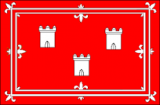



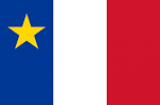
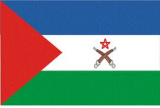


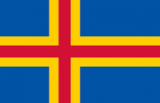


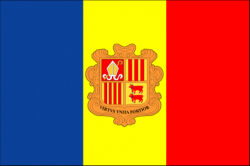

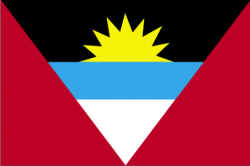

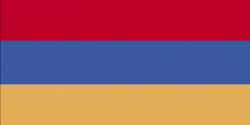
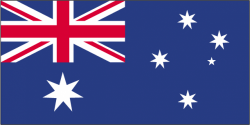


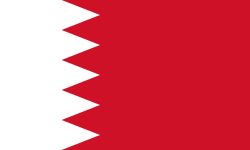
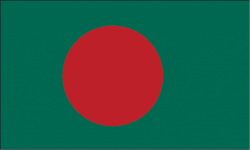

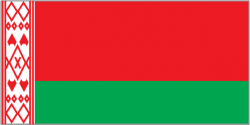




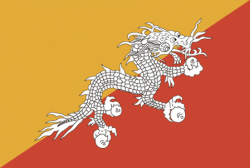
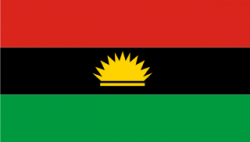






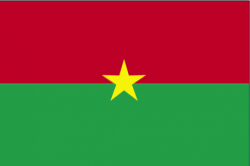


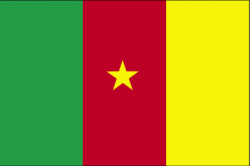


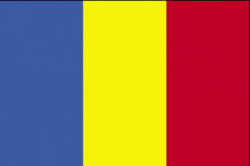
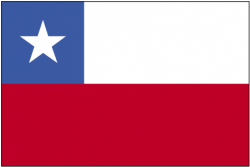


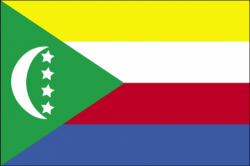
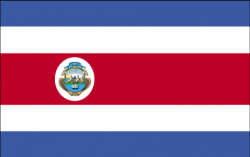

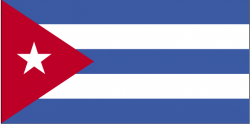

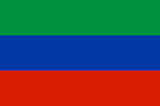
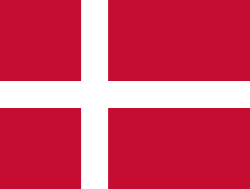


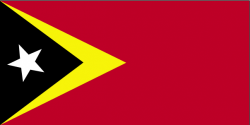
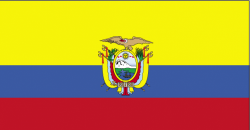





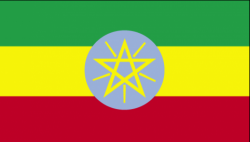
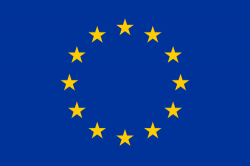
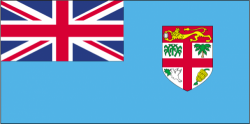


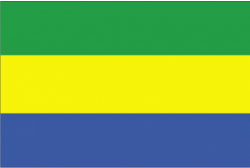

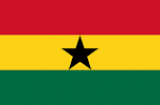


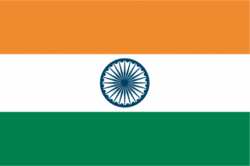
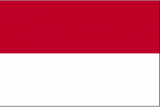

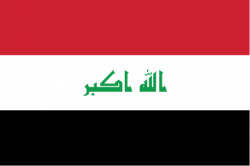


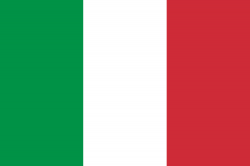

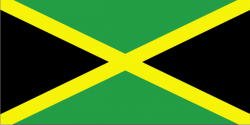
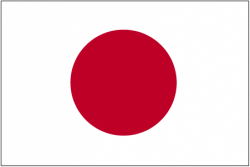

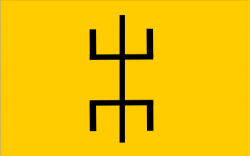



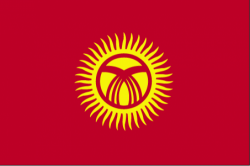
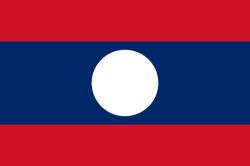



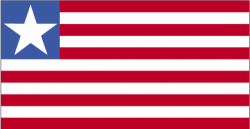


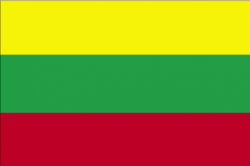
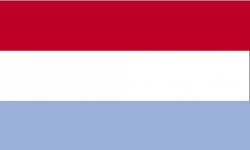

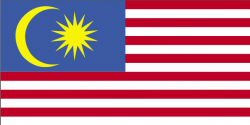
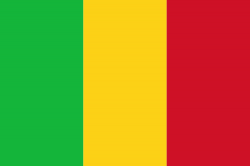
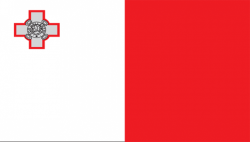
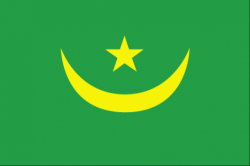


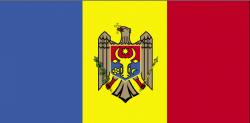
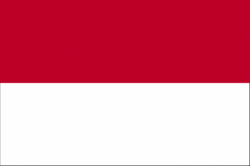

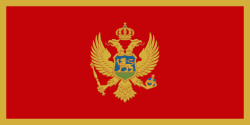
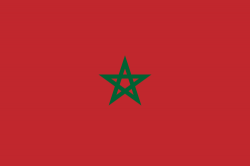

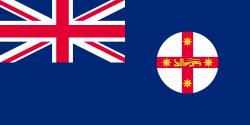
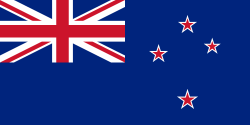
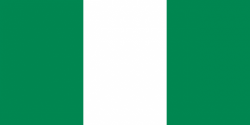
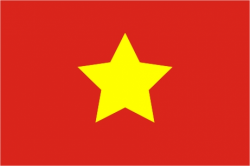




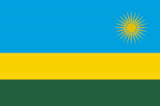
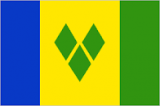
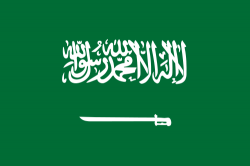







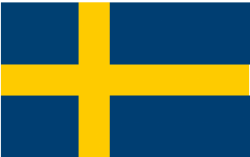


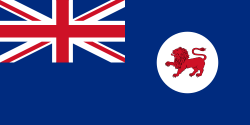
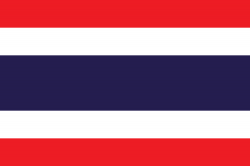


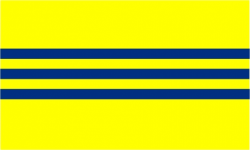
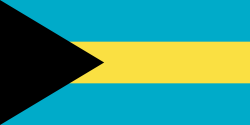

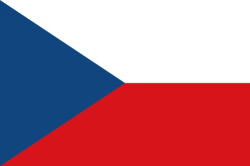
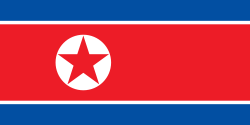

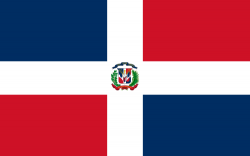
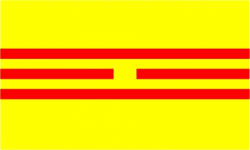
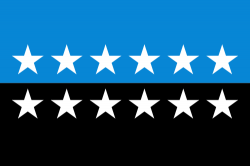


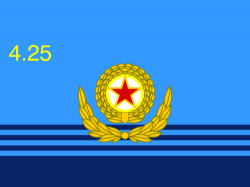
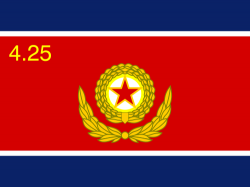

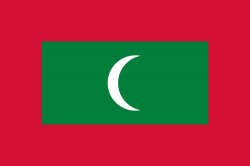
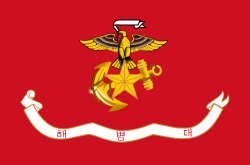
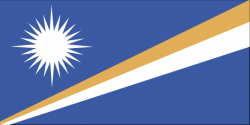

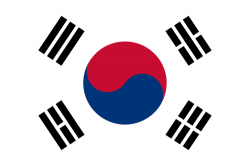
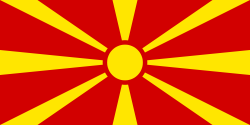


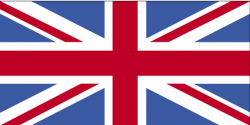


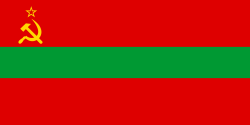




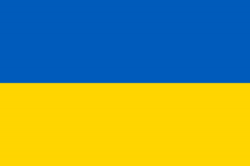
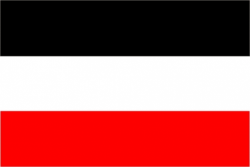
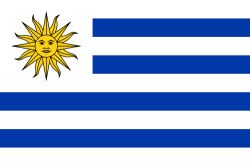
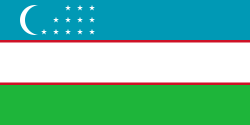

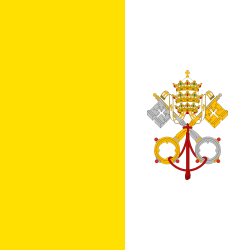


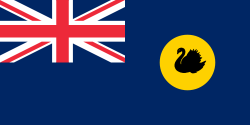




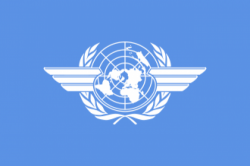













Have a discussion about the World Flags group with the community:
Report Comment
We're doing our best to make sure our content is useful, accurate and safe.
If by any chance you spot an inappropriate comment while navigating through our website please use this form to let us know, and we'll take care of it shortly.
Attachment
You need to be logged in to favorite.
Log In